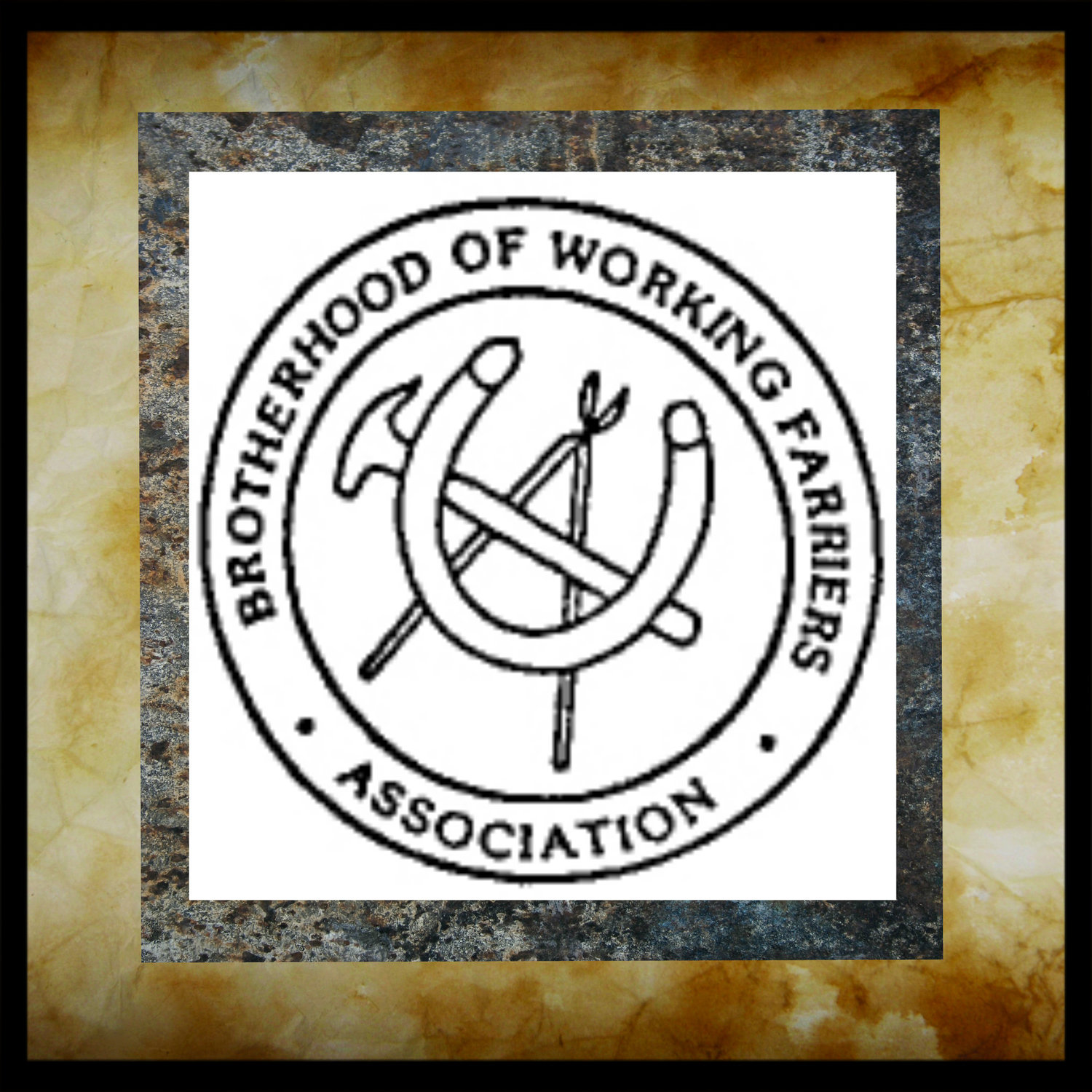BWFA Hall of Fame Member, Dan Marcum seen here with BWFA President, Link Casey
Ever since people began working on horses feet, they have been plagued with all kinds of problems. Whether you use old fashioned ideas or new technology, hoof problems can be helped by good farrier work, or made worse by bad work. For instance, the high-low foot condition affects more than the feet. In fact, it can affect the whole horse if it is not corrected. The high-low condition is mostly identified in the front feet where it seems to be exaggerated the most, but usually it is bilateral. When a horse has a high heel on the right front foot, and a low heel on the left front foot, more than likely the heel of the left hind will be high and the right hind will be low.
There are many ramifications from uneven feet. Problems can occur anywhere in the limb, but generally the greatest problems will be found at the origin of the limb or close to it. The origin of the limb is the end that is closest to the spine. The most problematic limb is usually the one with the high heel. The high heel makes the leg longer. However, if the problems with the affected limb are severe enough and the horse favors it greatly, the good limb will seem to be the most sore because it has to work twice as hard to compensate for the bad side. This soreness is usually in the muscles.
The high low condition can cause muscle knots and UMC's (unreleased muscle contractions) which can eventually put pressure on the spine. The shortened muscle is attached through a tendon, and can pull the spine out of alignment. If uncorrected, due to compensation in the way the horse travels, pain will conduct its way through the whole body causing lameness. The lameness may not even show up where the origin of the problem is, but will continue to get worse and spread. Spinal misalignment and tight muscles caused from muscle knots and UMC's can cause anything from limb lameness to short striding to all over muscle tightness that affects all aspects of the range of motion throughout the whole horse.
Some of these problems are also hard for the veterinarian to diagnose. Muscle spasms, muscle knots and UMC's will not show up on an x-ray, and can be overlooked. For some of these undiagnosed problems rest or turn out for a month or many months is usually prescribed. Rest will not necessarily fix the muscle knots, or UMC's. Horses sometimes fix their own muscle knots and UMC's when they are turned out in a pasture by rolling, rubbing on a tree or other object, or from another horse massaging on them.
It is alway helpful for a farrier to be educated in these things for it can help to understand lameness. Equine Flexion Therapy (EFT) is a system that can help educate farriers in these areas, so they can help the horse rebound to its natural self. EFT can help with other lameness problems, and help the farrier that is educated in it to be one step above other farriers. The High Low condition is only one aspect among many.
Dan Marcum is BWFA Hall of Fame member, serves on the Board of Directors and provides quarterly EFT courses at the Farriers' National Research Center. He operates All Around Training Center in Kirbyville, Texas and has patented his unique Equine Flexion Therapy technique.



